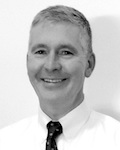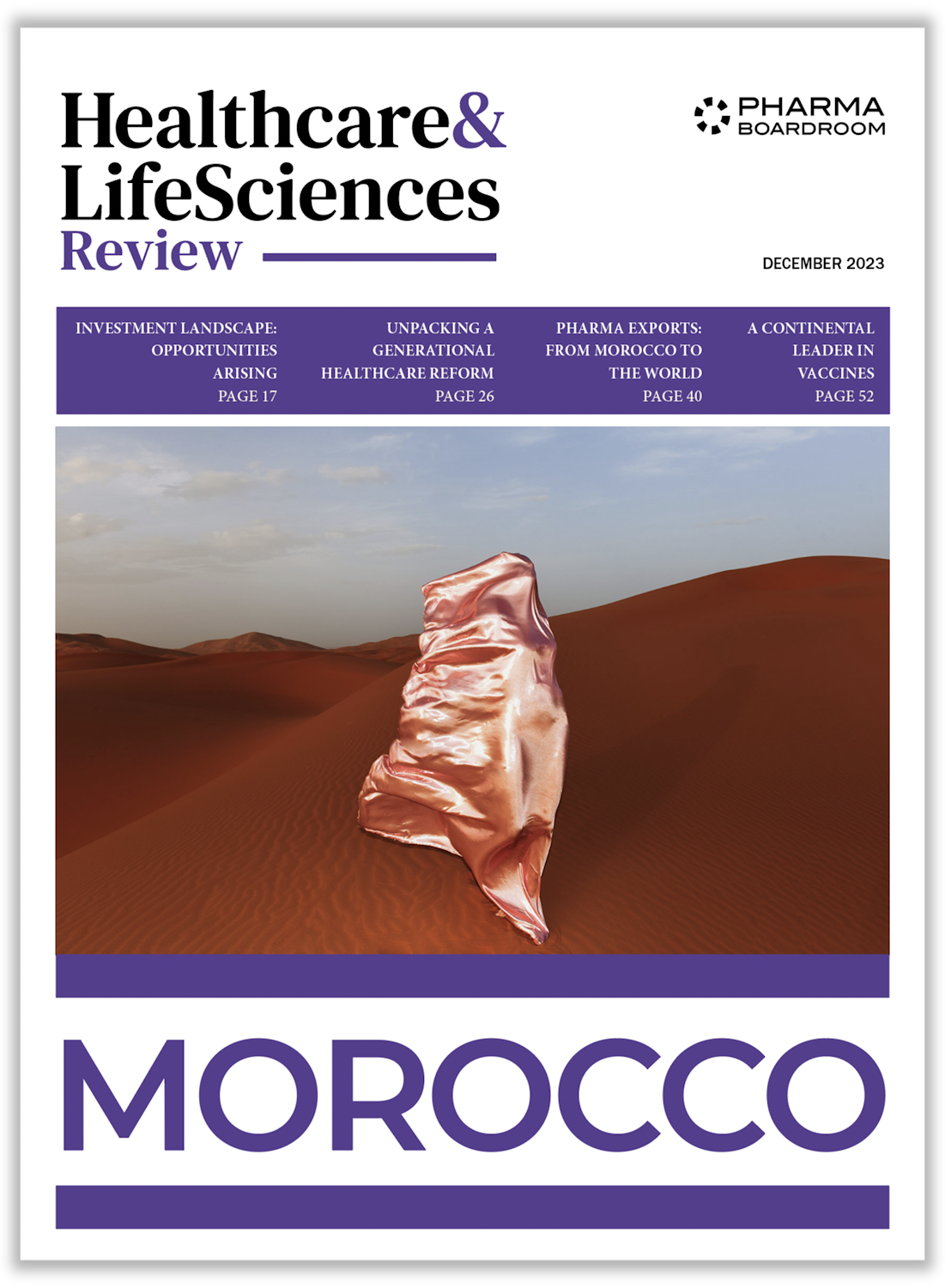Andrew Wirths arrived to Puerto Rico in 2013 to run Merck’s manufacturing operations on the island. He discusses how dynamic changes within the industry is impacting their competitive nature and recent investments that Merck is making in Puerto Rico’s facilities, which represent a key part of the company’s commercialization process.
What objective did you set for yourself upon arriving?
The key priorities for this plant site are focused on its mission, meaning transforming from a basic supply site with five products, most of which were off patent and with stable demand, to a commercialization site. A commercialization site has the responsibility of shepherding new chemical entities (NCEs) from proof-of-concept to commercialization in the marketplace which is a far more dynamic objective. Taking a plant site with five products producing one billion tablets for many years and adding several more products with new launches means an increase in capability, speed, cadence and cost competitiveness. We get really involved at the Phase IIb level, in terms of scaling it up, supplying clinical, and going full-scale commercial depending on the forecast. Some of our newest products are the best in the industry. Analyst reports feature three new NCEs as Merck’s upside, all produced in Puerto Rico. Getting people to recognize that we will evolve our capabilities in terms of technicality, cost, speed and agility is our biggest challenge.
Not only that, but it must require a big investment on your side in terms of resources and talent.
We have a team of chemical and industrial engineers with project management skills that will develop processes, development, validations and scale-ups of processes. From the analytical standpoint, testing methods have to be developed for those new products. Merck runs both here. We have a very sophisticated analytical team that builds capabilities at the site. This is a very unique skill set.
Is this a global trend of Merck or did it start in Puerto Rico?
In the old model, after a new product had gone through all the development work, the product would be licensed after clinical trials finished. The manufacturing division would take the product after it had been developed and look at our network for the best fit among our 30 plants, based on a number of factors. Every company did it this way.
What has changed is the idea of placing knowledge at the front end, building the knowledge as the product matures, and of course not every product succeeds. You want to optimize your throughput and spend at risk. Because only a few new products actually make it, we do not want to invest in a new facility somewhere and not have it work. It is better to consolidate the risk in one area and produce successful candidates for a number of years and then pass to another facility when the product is more stable.
It also depends on the R&D success of innovators, which partly happens through acquisitions. How would that affect manufacturing in the future? Is there a risk in that sense?
Yes, in fact Merck recently bought a Hepatitis C compound, and we acquired Cubist which gave us new products and revenue stream for antibiotics. More broadly there is much collaboration throughout the industry; This is exciting and anxious simultaneously, in that things can go really well but you must then accommodate for so much more and reprioritize within your own framework if a new compound works. Merck’s acquisitions Merck like Cubist and Idenix now must be accommodated. That is part of the rapid response; we will be far more dynamic now.
So some companies will do better than others in adopting this flexibility in innovative manufacturing. Will there be a divide across the industry?
We will see a big shakeout in the next five years, if it is not happening already. Looking at the number of pharmaceutical companies that have merged or consolidated since the 1980s, only a handful of names have survived. That trend will continue.
How do you see the consolidation of the industry affecting Puerto Rico?
There are vacant facilities in Puerto Rico. PRIDCO is trying to convert those assets into something useful and avoid stripping out the facilities. As everyone will be chasing large molecules, many companies including Merck are expecting a much larger proportion of their revenue in this area, which tends to act as an annuity..
What does your portfolio look like in terms of everything being produced here?
We have a very good spectrum of products, including oncology, diabetes, cardiovascular, consumer goods, and infectious disease. We have new products for osteoporosis, cardiovascular and Alzheimer’s. The facilities themselves are suited to the mission, which is partly why we obtained the commercialization certification. With non-sterile oral dosage, powders are blended and granulated and pressed into tablets. It is simpler in some ways to the large molecule space, but we have consolidated commercialization activities here, de-risking the business by putting all the MKs in Puerto Rico from a cost perspective. I do not have to recapitalize because I have a very flexible facility where I can make different drugs with different technology platforms embedded here. If a new product does not succeed, I do not lose that much. We have a threshold for spending capital per new product around USD 100,000, which is fairly inexpensive.
How do you find the talent in Puerto Rico?
As an example, Mayagüez has one of the best engineering schools worldwide. You have a basis for operations of pharmaceuticals already here with a community, and the infrastructure to support it. Everybody knows each other, so if there is an issue with a piece of equipment, I can usually replace it; if not I can do a tradeoff with some other company here. Talent is not moving as much as in Singapore, with only four to five percent turnover compared to 10 to 15 percent there. The local community is an advantage, and therefore we need to step up our game compared to other manufacturing hubs worldwide.
How do you find the dynamics of competing for investment compared to other countries at the corporate level?
The dynamics here are at par with other sites also competing for volume and investment. Puerto Rico has a low tax rate jurisdiction status. In addition to the physical supply chain, there is a financial supply chain, which allows you to capture profit within the local entity. Tracking new investment is about performance, be it product launches, pipeline, or day-to-day supply.
How do you see Merck Puerto Rico evolving in the future, giving its paramount position within the corporate structure?
The commitment to Puerto Rico is evident. Merck still has a significant presence here. We recently invested over USD 100 million into this facility over the last four years, and being a commercialization site really speaks to the future. Much of that depends on the pipeline and volume growth. As a factory I tell people we are a volume-based business and as volume comes and goes, so will we. Puerto Rico has a lot to offer; the integration between academia, industry and government is strong, and numerous forums exist to foster competitiveness. There is no shortage of people willing to help. The pharmaceutical industry is very connected and the people here have the skill set and capability that is not found everywhere, including geographic proximity to the US which is helpful.
Where do you want to take Merck in the coming years?
Merck must successfully launch the products we have in our MKs to be globally competitive. We need to get to a place where you can compare our cost basis with anywhere in the world, and keep it in Puerto Rico.. I need to fill the plant up and our pipeline will help with that. We also need to drop our cost base in indirect spend and overhead, especially energy costs, which are about 2.5 times more than in the US and is our third largest expense after people and depreciation.
The future will be around our commercialization model and being the premier launch site for Puerto Rico and Merck. It is about world-class supply. Pharmaceutical manufacturing is often vastly different to other types of manufacturing. Our lead times and turnovers are much longer, which means very different expectations for my customers. Inventory and cycle time management will drive the industry to a faster pace. On average, pharmaceutical lead times are hundreds of days, from what I have in my plant to the time it leaves my ownership in the distribution chain. Not many industries can afford that. Toyota’s delivery schedule is plus or minus ten minutes, whereas mine is measured in days. Eventually, pharmaceuticals will become like any other product. Ten years ago, everyone criticized the industry for developing me-too drugs crowding the market, all commanding a premium. Now, every major government customer of ours is demanding the cost-benefit of every product, which is justified. We are seeing and feeling that cost pressure, and consequently there will be new worries like product cost, cycle times, or inventory cost.
Perhaps for American companies, this awareness regarding government payments and costs going down came much later than in other countries. How challenging is it to enter into this mindset?
The majority of our global profit comes from the US. We have succeeded before and we will be successful again. But I am convinced that there will be a shakeout unlike anything before. The industry has been too profitable for too long and it will change. Merck is well suited; we recently revamped our entire portfolio by removing consumer health and adding in Idenix for Hepatitis C, Cubist for infectious disease, as well as a big focus on oncology. As a company Merck understands these changes, but we must execute and drive ourselves to that change, which has been more dramatic in the last three years than the previous twenty.







